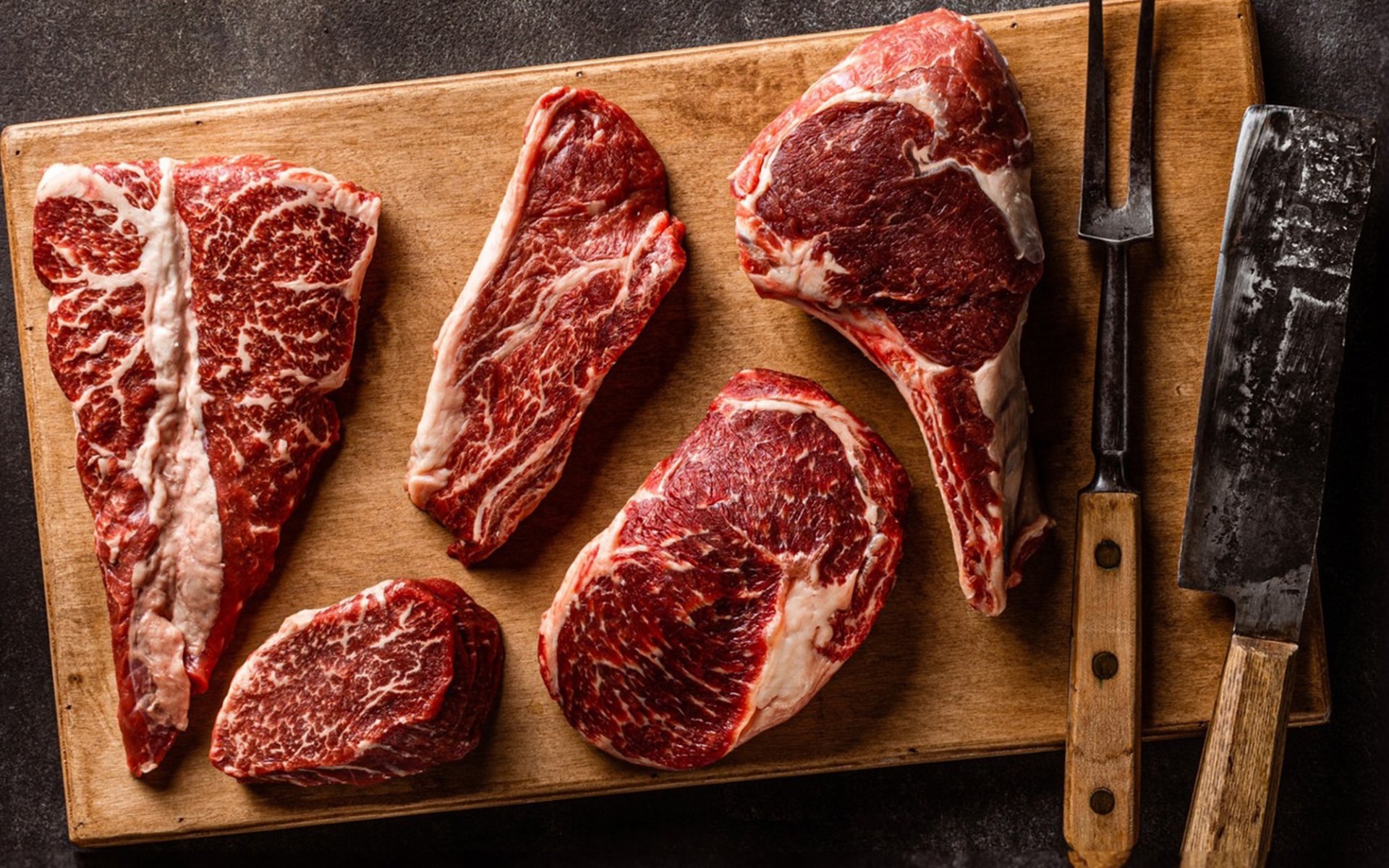Beef Grading and Marbling Scores

Have you ever walked into a supermarket and seen terms like Prime, Choice, or Select associated with beef? These terms are not just marketing gimmicks; they are part of a sophisticated beef grading system that plays a crucial role in determining meat quality. Rimping Supermarket in Chiang Mai understands this importance and is here to guide you through the world of premium beef, ensuring you select the best ingredients for your culinary endeavors.
Decoding Beef Grading: The Key to Consistent Quality
Beef grading is a rigorous evaluation conducted by trained professionals to assess the quality and characteristics of beef. The primary objective of grading is to provide consumers and the beef industry with consistent and reliable quality, allowing for clear differentiation between various grades of meat. This ensures you always know what to expect when purchasing beef.
The principles of beef grading involve several factors, including the color of the meat, the age of the animal, specific cuts, and even the gender of the cattle. Among these, one of the most popular and widely recognized grading methods is based on the amount of intramuscular fat, commonly known as Marbling Score.
Marbling Score: The Essence of Flavor and Tenderness
Marbling Score refers to the scoring of beef based on the quantity and distribution of fat within the muscle tissue. This intramuscular fat appears as fine white flecks and streaks, resembling marble. The more abundant and evenly distributed this fat is, the higher the score the beef receives. High marbling is highly valued because it contributes significantly to the meat's juiciness, tenderness, and rich flavor, making it a desirable characteristic for premium cuts.
Exploring the World's Top 3 Beef Grading Systems
While the concept of Marbling Score is universal, each country has its own unique beef grading system, influenced by local cattle breeds, environmental conditions, and rearing practices. Currently, three systems are widely recognized and respected globally: the Japanese, Australian, and American systems. Rimping Supermarket sources premium beef from all these regions to offer you a diverse and high-quality selection.
1. Japanese Beef Grading System
The Japanese beef grading system is renowned for its precision and emphasis on premium quality. It primarily considers two main factors
- Yield Grade: This assesses the amount of usable meat that can be obtained from a carcass, categorized into three levels: A, B, and C, with A being the highest yield and C the lowest.
- Meat Quality Grade: This is divided into five levels (1-5), where 1 indicates the least marbling and 5 indicates the most significant marbling.
In addition, Japan utilizes the BMS (Beef Marbling Score), a sub-system developed by the Japan Meat Grading Authority (JMGA). This system measures marbling on a scale from BMS 0 to 12. BMS 0 signifies no marbling, while BMS 12 indicates over 50% intramuscular fat. Premium A5-grade beef, highly sought after globally, typically boasts a BMS level of 8 or higher, reflecting its exquisite marbling and melt-in-your-mouth tenderness.
2. Australian Beef Grading System
Australia's beef grading system has evolved significantly. Previously, it utilized the AUS-MEAT standard, which graded beef from 0-9 in conjunction with the BMS system. However, Australia has since developed the Meat Standard Australia (MSA) system, a more comprehensive and precise standard. MSA considers a multitude of attributes, including
- Meat color
- Cattle age
- Meat firmness
- Marbling characteristics
- pH levels and temperature
- Hormone and antibiotic presence
The MSA system categorizes beef into 9 levels, from M1-M9, where M1 represents the lowest quality and M9 the highest. For Marbling Score, MSA uses a scale from 100-1,190. M1-grade beef typically has a marbling score of 300-400, while M9-grade beef exhibits scores of 1,100 or higher, ensuring a wide range of quality and characteristics in Australian beef.
3. USDA Beef Grading System (United States)
The United States beef grading system is managed by the United States Department of Agriculture (USDA). This system primarily focuses on the level of marbling and the age of the cattle; the more marbling present, the higher the quality grade.
The USDA system has eight total grades, but only three main grades are widely distributed to consumers
- US Prime (Excellent Quality Beef): This is the highest grade, derived from young, well-fed cattle. It features 8-13% intramuscular fat, resulting in incredibly tender, juicy, and flavorful meat. Due to its scarcity compared to other grades, Prime beef is typically found in high-end restaurants and hotels.
- US Choice (Good Quality Beef): This is the second-highest grade, also from young cattle, with approximately 4-10% intramuscular fat. Among all cuts, the rib section of Choice beef is particularly suitable for various dishes. When cooked properly, it offers a tender and juicy texture and is widely available in general markets.
- US Select (Medium Quality Beef): This grade has less marbling than US Prime and US Choice, with only 2-4% intramuscular fat. Consequently, Select beef is leaner and less tender, making it ideal for slow-cooking methods such as stewing, braising, or steaming, which help to tenderize the meat.


